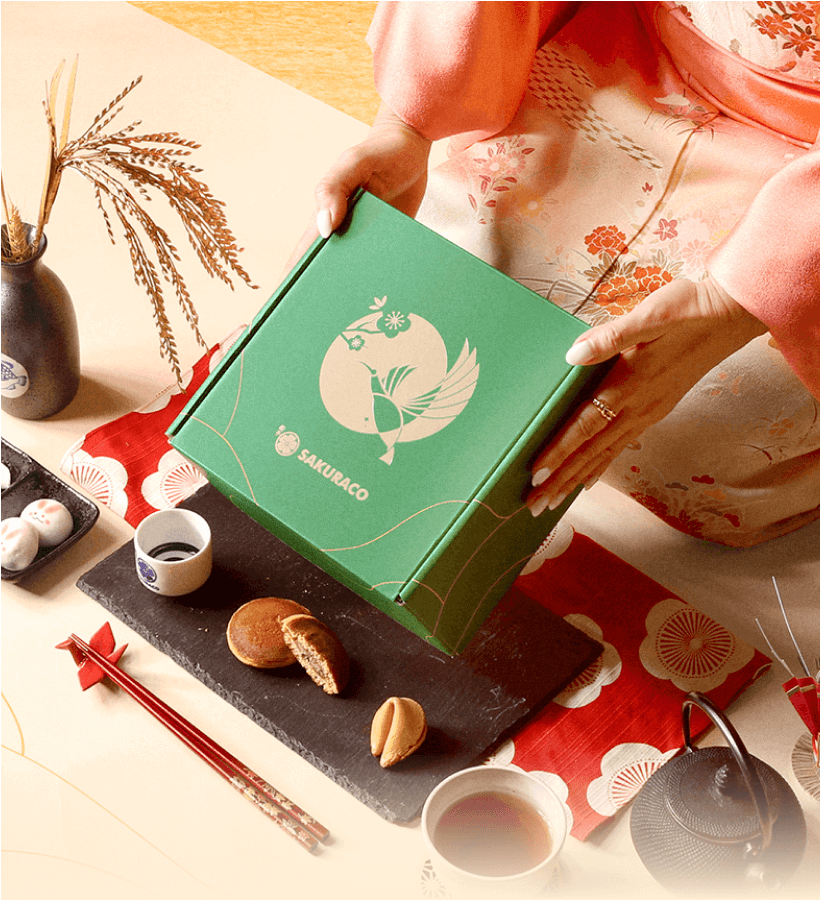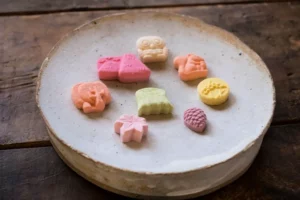In Japan, there is one vegetable that surprises everyone who tries it for the first time. It’s slimy, slippery, and a little unusual, but once you learn how it’s used, you’ll see why it’s beloved across the country. This ingredient is yamaimo, Japan’s mountain yam, a humble tuber that transforms everything it touches with its soft and stretchy texture. It can be served raw, cooked, or turned into tororo (grated yam paste), it is both comforting and fascinating, a perfect example of how creative Japanese cooking can be.
Table of Contents
ToggleWhat exactly is yamaimo?
The name yamaimo (literally meaning “mountain yam”) refers to a species of Japanese yam that grows naturally in the cooler, mountainous regions of Japan. Unlike other forms of yams or potatoes, you can actually eat yamaimo raw. Once peeled and grated, it becomes sticky and smooth, earning it the nickname “the mountain eel” because of its silky texture and revitalizing quality.
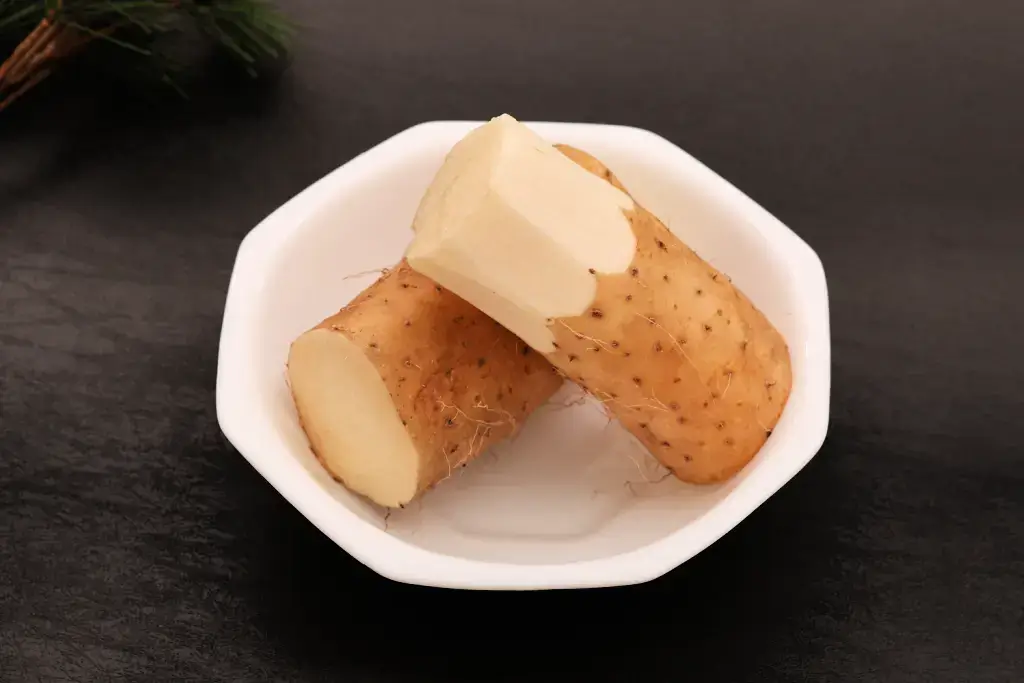
There are several types of yamaimo found across Japan, including nagaimo (a long, lighter-skinned variety) and jinenjo (a wild yam with a deeper flavor). All come from the same food family and are prized for their versatility in Japanese cuisine. In fact, it has been a staple ingredient since the Jomon period thousands of years ago, long before rice became Japan’s primary food source.
Why is its texture so unique?
The magic of yamaimo lies in what happens when you grate it. The raw flesh releases a natural enzyme called amylase, which reacts with starch to create its famous gooey consistency. This sticky, elastic paste, known as tororo, is unlike anything else in world cuisine. At first, the viscous texture might surprise some, but once you get used to it, its smooth lightness and natural sweetness make it a refreshing treat, especially during Japan’s humid summers. You’ll also notice how versatile this texture can be. When raw, yamaimo adds a slippery smoothness to cold dishes. When cooked, it turns fluffy and airy, ideal for savory pancakes, soups, or grilled dishes.
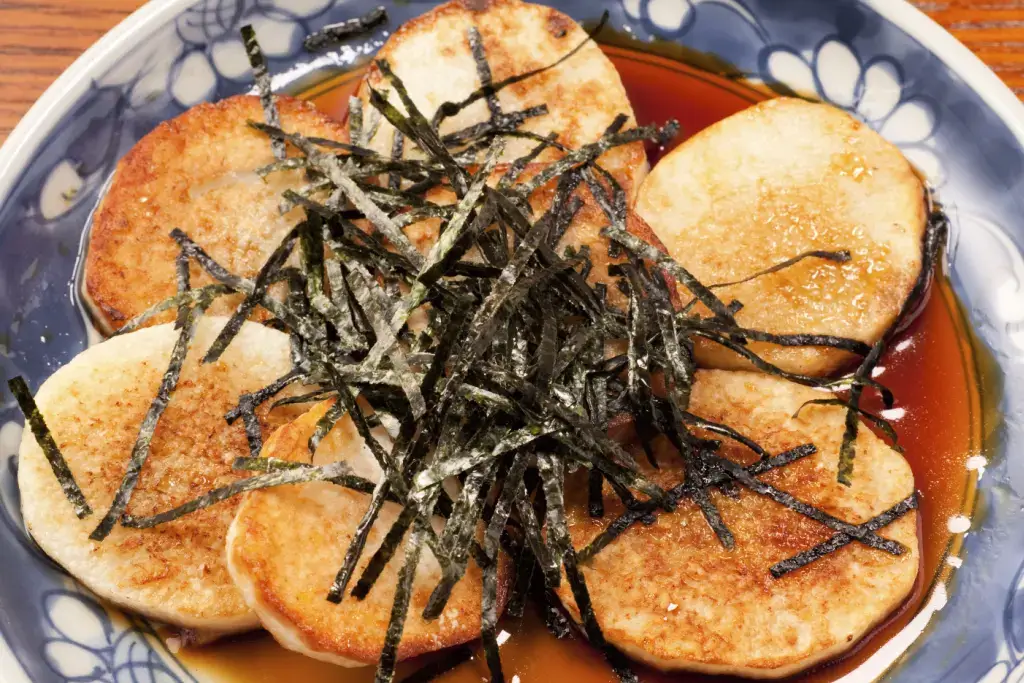
How do people enjoy yamaimo in everyday dishes?
The simplest way to enjoy yamaimo is by grating it to make tororo. It’s often served over steaming bowls of white or barley rice (called mugitoro gohan) or poured atop cold buckwheat noodles (tororo soba). Its naturally mild flavor makes it a perfect match for deeply savory sauces like soy sauce or tsuyu, the base for noodle soups.
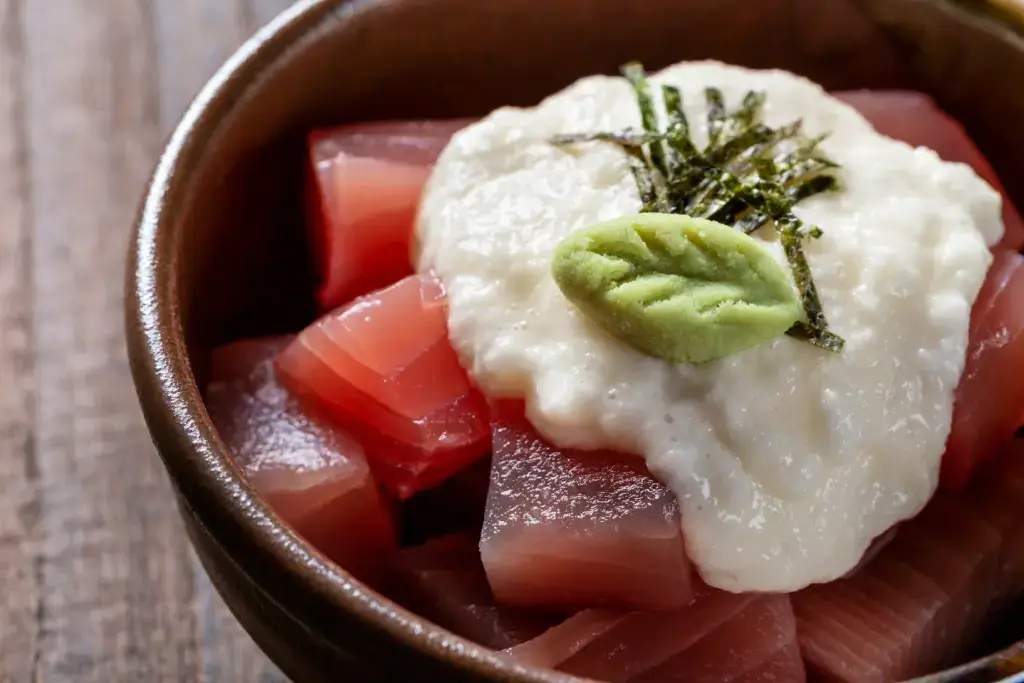
Another traditional favorite is yamakake, a refreshing dish made by topping diced tuna with tororo. The combination of fresh seafood and creamy yams creates an umami-rich experience loved by many Japanese diners. You might also find it whisked into miso soup (tororo-jiru), where the yam paste melts into the broth for a silky, comforting texture.
Cooked versions are just as popular. Some housewives in Japan mix yamaimo into batter to make okonomiyaki, giving the savory pancake a soft, airy finish. Meanwhile, in izakaya (Japanese pubs), yamaimo teppanyaki (grilled yams with soy sauce and butter) is beloved for its crispy exterior and creamy center.
Are you looking for great snacks that might include unique ingredients such as yamaimo? Check out Sakuraco! Sakuraco delivers traditional Japanese snacks, teas, and sweets from local Japanese makers directly to your door so you can enjoy the latest treats from Japan!
Why is yamaimo considered healthy?
Beyond its fun texture, it is packed with nutrients that make it a powerhouse in Japanese diets. It’s rich in potassium, calcium, and vitamins B and C, while also providing high levels of dietary fiber and resistant starch. These nutrients help support digestion, boost energy, and maintain balanced blood sugar levels.
Traditional Japanese medicine even classifies yamaimo as a strengthening food, said to “restore stamina” much like eel does. That’s how it earned the charming nickname “mountain eel.” In the summer, when humidity drains people’s energy, cold tororo dishes provide a light and revitalizing meal without feeling heavy.
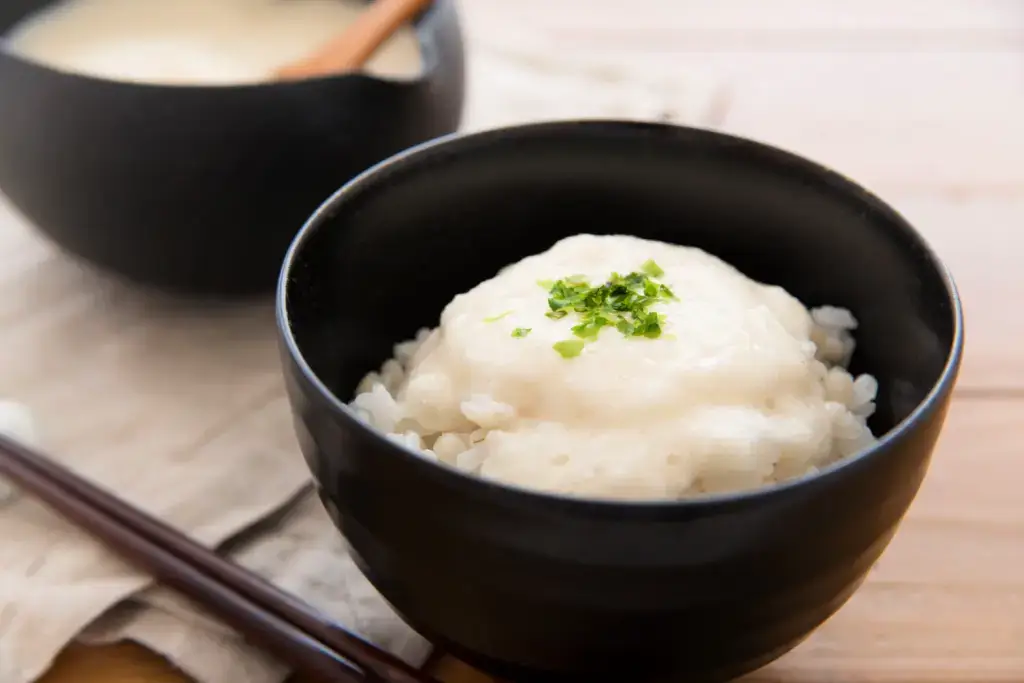
What’s the experience of eating it like?
For many, it offers both a taste and a texture journey. When raw, it’s cool and slippery, gliding effortlessly across the chopsticks. In hot dishes, it transforms completely. It is soft, fluffy, and almost cloud-like, absorbing flavors from other ingredients. It’s one of those foods where texture plays as significant a role as taste.
In Japan, this type of food is often described as neba-neba, meaning “sticky” or “viscous,” a texture also found in foods like natto (fermented soybeans), okra, and mozuku seaweed. Japanese cuisine embraces these unique textures, instead of hiding them, and celebrates ingredients that feel as special as they taste.
Where can you try it?
If you travel to Japan, you can find these dishes almost anywhere, from simple family restaurants to elegant kaiseki dining. In Nagano, Yamagata, and Aomori, local varieties are especially famous. Nagano’s tororo soba is a regional treasure, while Yamagata’s hearty tororo soup warms up snowy winters. Many izakayas across Tokyo and Osaka feature yamaimo in their seasonal menus. You can even try yamaimo fries or yamaimo tempura, modern twists that turn the traditional ingredient into crispy comfort food.
How is it important to Japanese culture?
It represents something very Japanese: a love for natural textures, subtle flavors, and balance. It’s humble yet refined, turning a simple mountain tuber into dishes that highlight freshness, health, and artistry. Like many traditional ingredients, it connects modern Japanese life to the wisdom of the past, where every ingredient, no matter how plain it looked, was treated with care and creativity.
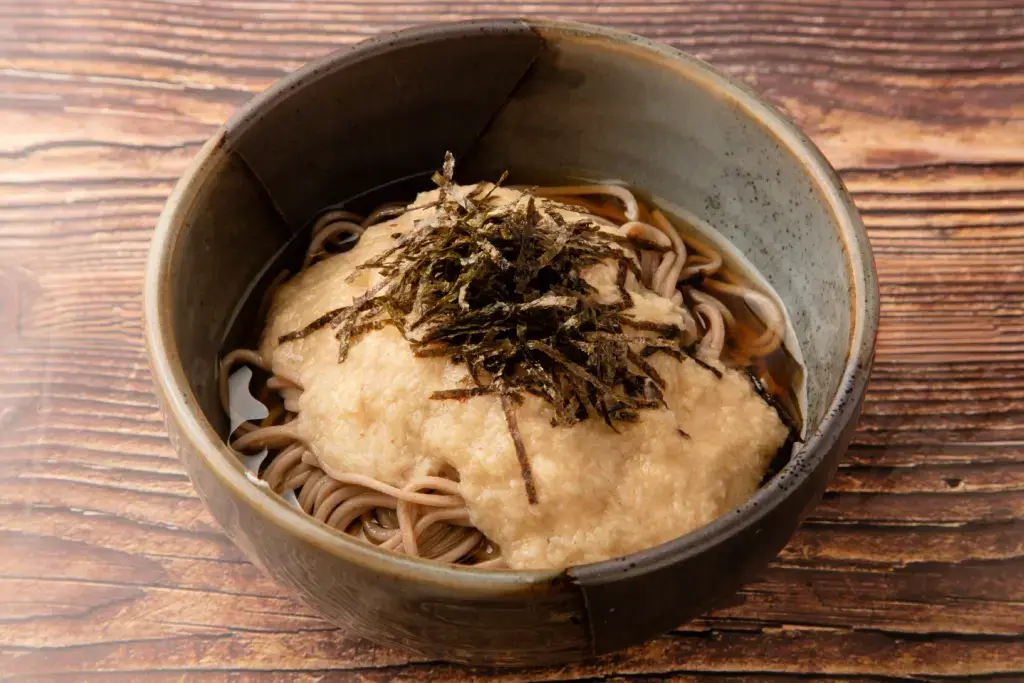
In every spoonful of tororo or every bite of yamaimo teppanyaki, you taste not just the mountain’s gift but also the heart of Japanese cooking, a quiet appreciation for nature’s hidden magic. So the next time you find yourself in Japan, don’t shy away from this slippery wonder. You might just discover that texture can be just as delicious as flavor. Have you ever tried this dish before or have plans to try it? Please let us know in the comments below!
Cited Sources
- The Japan Times. “‘Yamaimo’: Japan’s slimy mountain yam“.
- Nippon. “Yamaimo: Exceptional Tubers That Can Be Enjoyed Raw“.
- Specialty Produce. “Yamaimo Root“.




